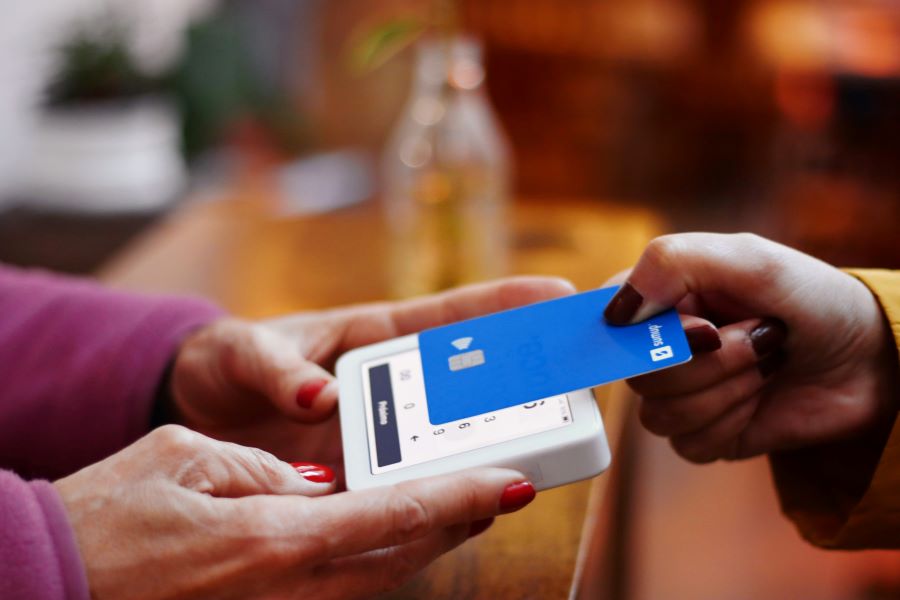A swipe charge is issued to shops every time a card is used. In brief, credit card swipe fees, also known as interchange fees, are the 2%-3% fees charged by credit card companies to businesses each time you swipe your credit card to complete a transaction. Visa and Mastercard establish the swipe costs for the thousands of banks that issue their cards, and the fees are paid by customers. If you don’t have a credit card, apply for the Airtel Axis Bank Credit Card today to enjoy some amazing benefits. Read more to know about credit card swipe charges.
Also Read: How to Protect Credit Card Transaction from Frauds
Credit Card Swipe Payment Process
The card network monitors securely transmitting the payment request to the issuing bank. The bank then compares the card information to the associated account to determine whether there is sufficient balance or credit limit. It is also up to the issuing bank to approve or reject the transaction. It responds appropriately using the same channel-card network and CPU. Following that, the notice will be shown to the merchant as instructed by the issuing bank. The transaction is complete if it is approved. This, however, does not imply that the merchant has received the money. Your account gets debited, but the real clearing takes some time, or perhaps a few days, depending on the card network.
Here are the steps of the credit card payment process-
- You need to give the credit card to the merchant for swiping.
- The merchant then sends the card details to the processor.
- The processor forwards the details to the card network.
- The card network then connects with the bank for payment approval.
- After the approval the transaction is complete, and a receipt is generated.
Also Read: What is Credit Card Balance Transfer?
What is the cost of a credit card swipe charge?
If you have a credit card then you must be aware that merchants and, in certain cases, issuing banks issue credit card swipe fees every time you use your credit card to make a payment. Let’s summarise credit card swipe charges in a few points-
The retailer charges a “credit card swipe fee” when you complete a credit card purchase.
The credit card network, which includes the issuing bank, determines the credit card swipe charge.
The Reserve Bank of India (RBI) regulates credit card swipe costs at issuing banks.
Credit card swipe charges account for around 2% of all physical credit card transactions and 2.3-2.5% of internet transactions.
The key to efficiently using your credit card is to understand all there is to know about the product, including ideas like swipe charges and other credit card costs. Understanding the specifics of swipe charges is a key step in knowing the full potential of a credit card and how to effectively use it to your advantage.
How are credit card swipe charges applied?
Credit Card swipe charges, also known as interchange fees, are fees payable each time a credit card transaction is done. These fees are set by the card network and are an important part of the credit card payment system. Credit card swipe fees are around 2% of the transaction amount but can be as high as 4% for some premium rewards cards.
Also Read: Here’s how you can check cash limit in a credit card
Who pays the swipe charges?
Credit card swipe fees are generally paid by retailers. However, in rare cases, issuing banks may charge additional fees. To guarantee fairness and transparency, the Reserve Bank of India (RBI) supervises these charges. When you swipe your card on a POS system, the retailer must pay a tiny proportion (about 2%) to the bank as rental costs for utilizing the POS equipment.
Also Read: Decoding functionality of Credit Card Settlement Process
Impact of credit card swipe charges on customers
While retailers pay swipe fees directly, they might have an indirect impact on customers. To counterbalance these costs, some merchants may raise product or service pricing, resulting in a slight rise in overall cost for customers. If you are aware of swipe costs, you are able to make wise decisions while using credit cards. This knowledge is valuable when selecting whether to use credit or cash for a transaction, especially since shops may charge you for swipe costs.
Making credit card payments online is convenient and typically results in cheaper swipe costs. For credit card customers, banks provide user-friendly online payment methods. Being aware of these fees allows you to make the most of your credit cards while avoiding unpleasant surprises on your billing statements.
Get your new credit card from the Airtel Finance section of the Airtel Thanks UPI app!


 Get App
Get App  Airtel Store
Airtel Store  Login
Login 


